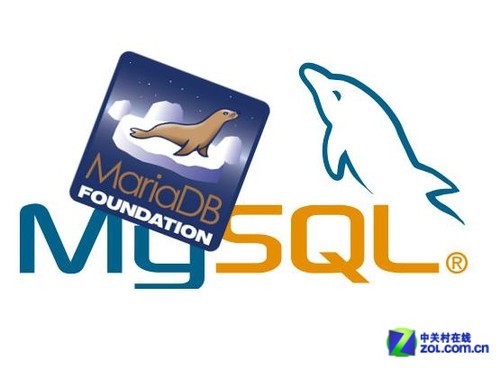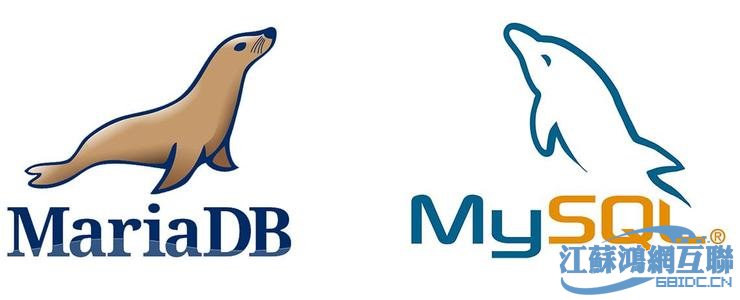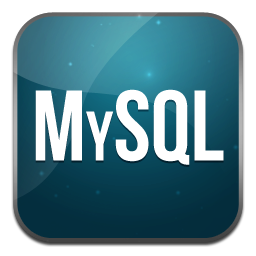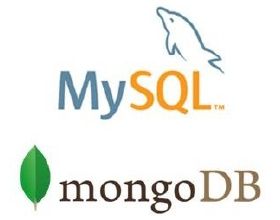Recommended 10 mysql master-slave architectures
Recently when deploying the MySQL master-slave replication architecture, I encountered "Last_IO_Error: Fatal error: The slave I/O thread stops because master and slave have equal MySQL server UUIDs; these UUIDs must be different for replication to work." This error message. That is, the same UUID is used in the master-slave architecture. Check the server_id system variable, it is already a different setting, what is the reason? What follows is a detailed description. 1. Error message mysql> show slave staus; Last_IO_Error: Fatal error:&nb
1. slave have equal MySQL server UUIDs

Introduction: Recently when deploying the MySQL master-slave replication architecture, I encountered "Last_IO_Error: Fatal error: The slave I/O thread stops because master and slave have equal MySQL server UUIDs; these UUIDs must be different for replication to work." this error message. That is, the same UUID is used in the master-slave architecture. Check the server_id system variable, it is no longer
2. Use Innobackupex to quickly build (repair) MySQL master-slave architecture
Introduction: There are many ways to build MySQL master-slave. The traditional mysqldump method is one of the choices for many people. But for larger databases, this method is not an ideal choice. Use Xtrabackup to quickly and easily build or repair mysql master-slave architecture. This article describes using innobackupex to quickly build or repair a master-slave architecture. For reference.
3. Use innobackupex to build mysql master-slave architecture based on the slave library

Introduction: Using a relatively short length, detailed analysis, pseudo code, code and animation, we introduce quick sort and heap sort in detail, and analyze the algorithm ideas and complexity. Worth a look
4. Building gtid master-slave based on mysqldump
Introduction: When implementing the MySQL master-slave architecture During the process, you can use the mysqldump method to build the master-slave. Mysqldump has generated GTID related information during the backup process, that is, these GTIDs can be skipped. For unskipped GTIDs, the IO thread will copy them to the slave server and be executed by the SQL thread. This article mainly demonstrates how mysqldump builds mysql master-slave in GTID mode.
5. MySQL GTID error handling summary

Introduction: MySQL GTID is a product evolved on the basis of traditional mysql master-slave replication, which uses UUID plus transaction ID to ensure the uniqueness of each thing. This method of operation means that we no longer need to care about the so-called log_file and log_Pos, but simply tell the slave library which server to find the main library from. It simplifies the master-slave setup and failover process, and is safer and more reliable than traditional replication. Since GTIDs are continuous without holes, when data conflicts occur in the master-slave library, they can be skipped by injecting empty things. This article mainly describes the error handling method of GTID master-slave architecture.
6. mysqldump quickly builds a specific library master-slave architecture (GTID)

Introduction: For a MySQL database with a small amount of data to build a master-slave architecture, it is a good choice to use the mysqldump tool to implement it. Combined with the MySQL GTID feature, it makes high availability a breeze. This article is a supplement to building gtid master-slave based on mysqldump. It mainly introduces the implementation of GTID master-slave based on multi-repository level, that is, not the entire instance level. The following is a detailed description and examples of this article.
7. MySQL automatic failover tool--mysqlfailover

Introduction: mysqlfailover is an important high-availability command included in the MySQL utilities toolkit, which is used to perform health detection on the master-slave replication architecture and implement automatic failover. It will regularly detect the health status of each node at specified intervals. Once it captures that the master node is unavailable, it will trigger failover-related actions and automatically perform failover to the best slave server at the moment. At the same time, other slave nodes in the entire master-slave architecture will point to the new master node, automatically completing the master-slave topology update.
8. Solution to MySQL master-slave replication inconsistency
Introduction: Basically, for a slightly larger website, MySQL master-slave replication will be configured. On the one hand, the master-slave of MySQL is used to separate the reading and writing of the database. On the other hand, the stand-alone backup of MySQL itself is not very strong. Generally, the master-slave architecture is used to perform data backup on the slave.
9. Major failure caused by inconsistency between master and slave data! Please pay attention!

Introduction: Fault description: Master-slave architecture, after the master went down, it switched to the slave, and the result was from A lot of data was lost (the data consistency was not verified before the downtime). There was no delay in synchronization at that time. When the user logged in, it could not be verified in the database. The result was
10. Redis master-slave automatic failover

##Introduction: There is a problem with the persistence of the Redis master-slave architecture. That is to say, the conclusion of the previous test is that persistence needs to be configured on the main instance to ensure that data is not lost across instances. In this way, the main instance will inevitably
in the process of persisting data to the hard disk. [Related Q&A recommendations]:
mysql master-slave architecture, what should I do if the master server fails?
The above is the detailed content of Recommended 10 mysql master-slave architectures. For more information, please follow other related articles on the PHP Chinese website!

Hot AI Tools

Undresser.AI Undress
AI-powered app for creating realistic nude photos

AI Clothes Remover
Online AI tool for removing clothes from photos.

Undress AI Tool
Undress images for free

Clothoff.io
AI clothes remover

Video Face Swap
Swap faces in any video effortlessly with our completely free AI face swap tool!

Hot Article

Hot Tools

Notepad++7.3.1
Easy-to-use and free code editor

SublimeText3 Chinese version
Chinese version, very easy to use

Zend Studio 13.0.1
Powerful PHP integrated development environment

Dreamweaver CS6
Visual web development tools

SublimeText3 Mac version
God-level code editing software (SublimeText3)

Hot Topics
 1664
1664
 14
14
 1422
1422
 52
52
 1316
1316
 25
25
 1266
1266
 29
29
 1239
1239
 24
24
 When might a full table scan be faster than using an index in MySQL?
Apr 09, 2025 am 12:05 AM
When might a full table scan be faster than using an index in MySQL?
Apr 09, 2025 am 12:05 AM
Full table scanning may be faster in MySQL than using indexes. Specific cases include: 1) the data volume is small; 2) when the query returns a large amount of data; 3) when the index column is not highly selective; 4) when the complex query. By analyzing query plans, optimizing indexes, avoiding over-index and regularly maintaining tables, you can make the best choices in practical applications.
 MySQL: Simple Concepts for Easy Learning
Apr 10, 2025 am 09:29 AM
MySQL: Simple Concepts for Easy Learning
Apr 10, 2025 am 09:29 AM
MySQL is an open source relational database management system. 1) Create database and tables: Use the CREATEDATABASE and CREATETABLE commands. 2) Basic operations: INSERT, UPDATE, DELETE and SELECT. 3) Advanced operations: JOIN, subquery and transaction processing. 4) Debugging skills: Check syntax, data type and permissions. 5) Optimization suggestions: Use indexes, avoid SELECT* and use transactions.
 MySQL: The Ease of Data Management for Beginners
Apr 09, 2025 am 12:07 AM
MySQL: The Ease of Data Management for Beginners
Apr 09, 2025 am 12:07 AM
MySQL is suitable for beginners because it is simple to install, powerful and easy to manage data. 1. Simple installation and configuration, suitable for a variety of operating systems. 2. Support basic operations such as creating databases and tables, inserting, querying, updating and deleting data. 3. Provide advanced functions such as JOIN operations and subqueries. 4. Performance can be improved through indexing, query optimization and table partitioning. 5. Support backup, recovery and security measures to ensure data security and consistency.
 MySQL's Role: Databases in Web Applications
Apr 17, 2025 am 12:23 AM
MySQL's Role: Databases in Web Applications
Apr 17, 2025 am 12:23 AM
The main role of MySQL in web applications is to store and manage data. 1.MySQL efficiently processes user information, product catalogs, transaction records and other data. 2. Through SQL query, developers can extract information from the database to generate dynamic content. 3.MySQL works based on the client-server model to ensure acceptable query speed.
 MySQL: An Introduction to the World's Most Popular Database
Apr 12, 2025 am 12:18 AM
MySQL: An Introduction to the World's Most Popular Database
Apr 12, 2025 am 12:18 AM
MySQL is an open source relational database management system, mainly used to store and retrieve data quickly and reliably. Its working principle includes client requests, query resolution, execution of queries and return results. Examples of usage include creating tables, inserting and querying data, and advanced features such as JOIN operations. Common errors involve SQL syntax, data types, and permissions, and optimization suggestions include the use of indexes, optimized queries, and partitioning of tables.
 Explain the role of InnoDB redo logs and undo logs.
Apr 15, 2025 am 12:16 AM
Explain the role of InnoDB redo logs and undo logs.
Apr 15, 2025 am 12:16 AM
InnoDB uses redologs and undologs to ensure data consistency and reliability. 1.redologs record data page modification to ensure crash recovery and transaction persistence. 2.undologs records the original data value and supports transaction rollback and MVCC.
 MySQL's Place: Databases and Programming
Apr 13, 2025 am 12:18 AM
MySQL's Place: Databases and Programming
Apr 13, 2025 am 12:18 AM
MySQL's position in databases and programming is very important. It is an open source relational database management system that is widely used in various application scenarios. 1) MySQL provides efficient data storage, organization and retrieval functions, supporting Web, mobile and enterprise-level systems. 2) It uses a client-server architecture, supports multiple storage engines and index optimization. 3) Basic usages include creating tables and inserting data, and advanced usages involve multi-table JOINs and complex queries. 4) Frequently asked questions such as SQL syntax errors and performance issues can be debugged through the EXPLAIN command and slow query log. 5) Performance optimization methods include rational use of indexes, optimized query and use of caches. Best practices include using transactions and PreparedStatemen
 Why Use MySQL? Benefits and Advantages
Apr 12, 2025 am 12:17 AM
Why Use MySQL? Benefits and Advantages
Apr 12, 2025 am 12:17 AM
MySQL is chosen for its performance, reliability, ease of use, and community support. 1.MySQL provides efficient data storage and retrieval functions, supporting multiple data types and advanced query operations. 2. Adopt client-server architecture and multiple storage engines to support transaction and query optimization. 3. Easy to use, supports a variety of operating systems and programming languages. 4. Have strong community support and provide rich resources and solutions.




